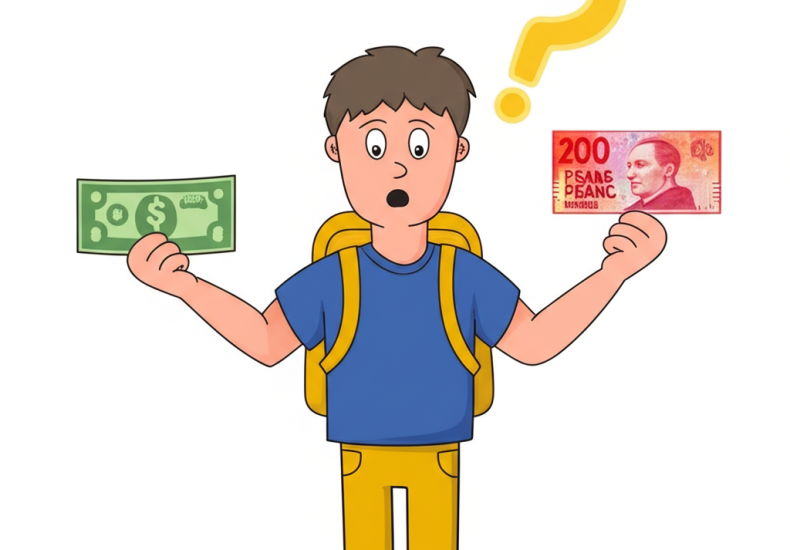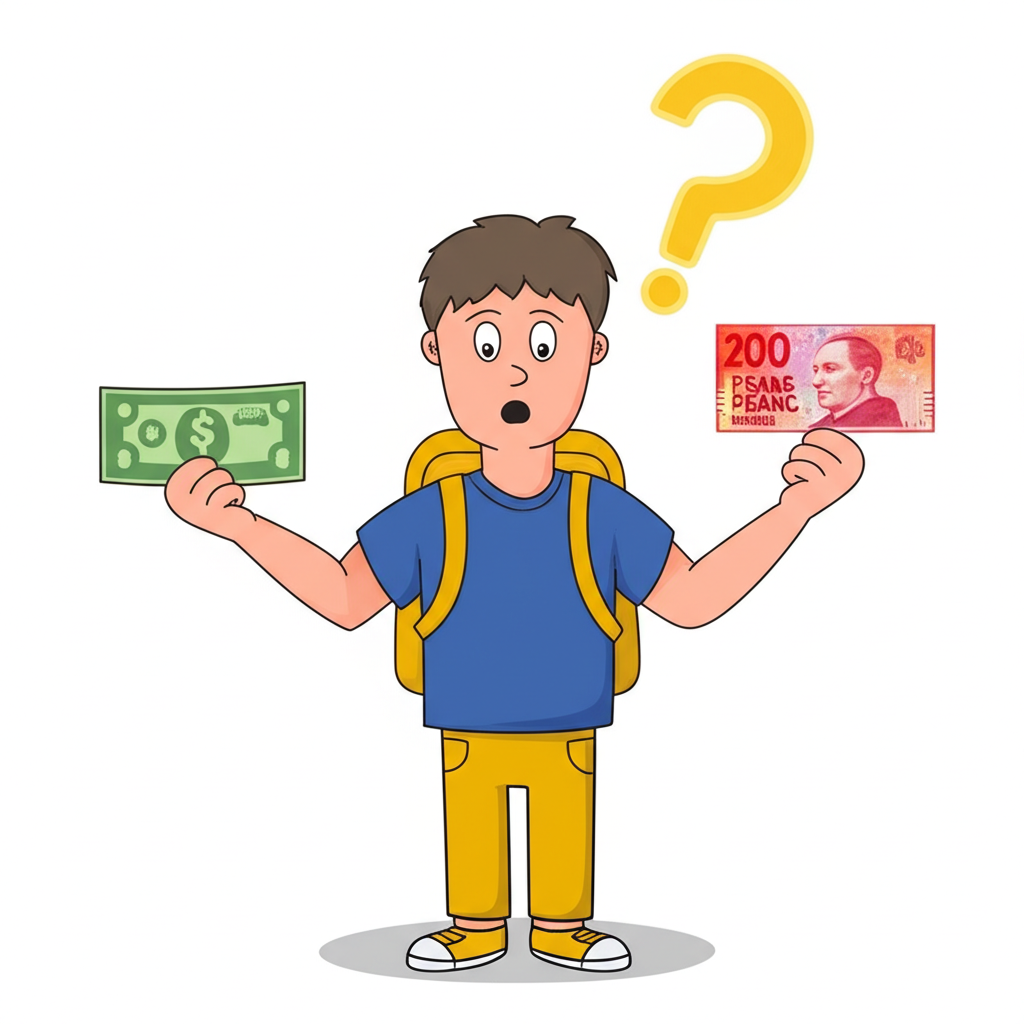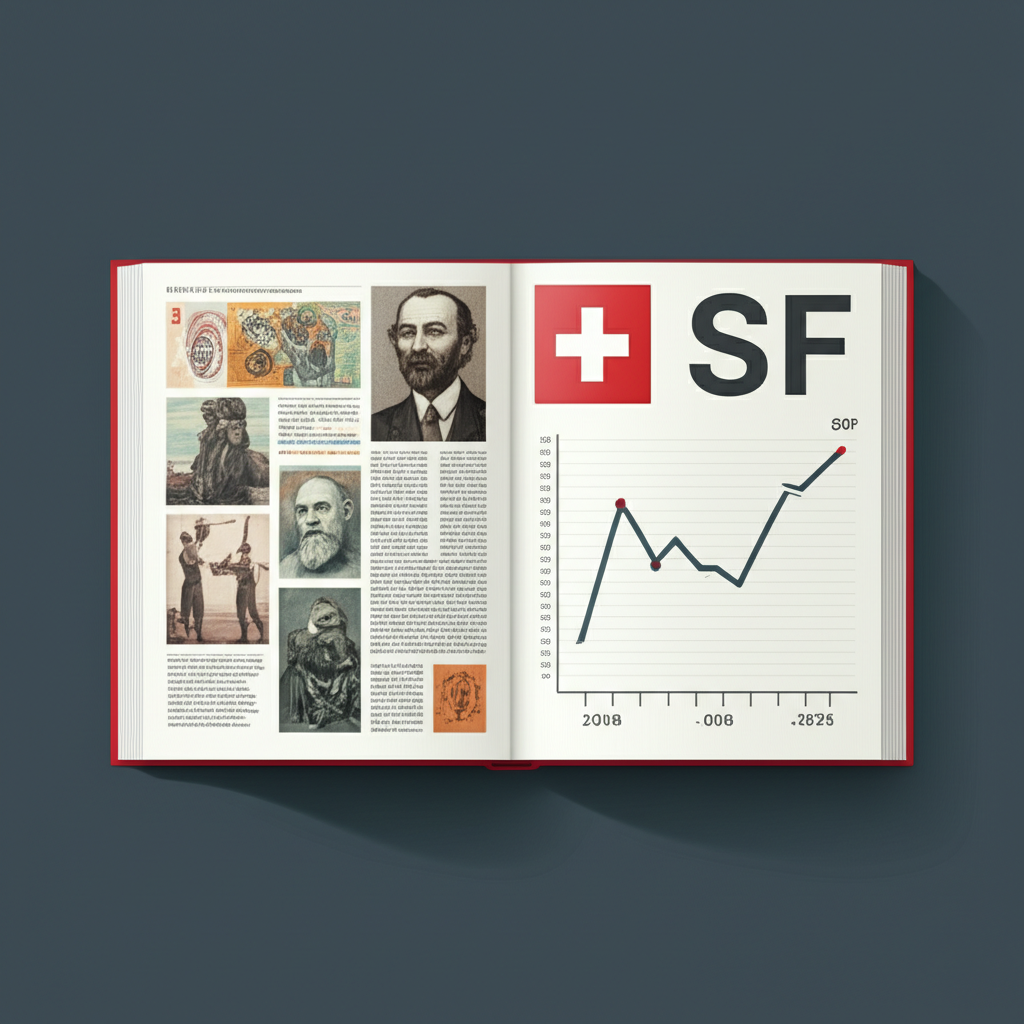
Swiss Dollar? Unraveling the Mystery: Why Switzerland Uses the Franc (CHF)
Table of Contents
ToggleIntroduction: What People Mean by “Swiss Dollar”

It’s not uncommon to hear the term “Swiss Dollar” used in casual conversation, especially among travelers or those new to global finance. This phrase usually stems from a simple mix-up—many countries with strong economies use “dollar” in their currency names, like the US, Canada, or Australia, so it’s natural to assume Switzerland follows the same pattern. But there’s no such thing as a Swiss Dollar. The real currency at the heart of one of the world’s most stable economies is the **Swiss Franc (CHF)**, a currency known for its resilience, precision, and global trust.
Understanding this distinction isn’t just about getting the name right—it’s about recognizing the deeper economic principles that make the Swiss Franc a cornerstone of international finance. Whether you’re preparing for a trip to Zurich, evaluating investment opportunities, or trying to make sense of forex markets, knowing the truth behind the “Swiss Dollar” myth is the first step toward smarter financial decisions. This guide clears up the confusion and dives into everything you need to know about the Swiss Franc, from its historical roots to its modern-day role in global markets.
Understanding the Swiss Franc (CHF): Switzerland’s Official Currency

The Swiss Franc isn’t just money—it’s a symbol of reliability. Backed by centuries of political neutrality, economic discipline, and financial innovation, the CHF stands out in a world where many currencies face volatility. It’s one of the few currencies that investors turn to when global markets wobble, making it a true safe-haven asset.
The Name and ISO Code: CHF
Switzerland’s official currency, used also by Liechtenstein and the Italian enclave of Campione, is the Swiss Franc. Its internationally recognized code, CHF, comes from the Latin name for Switzerland: *Confoederatio Helvetica*. The “CH” reflects this heritage, while the “F” stands for Franc. This naming convention avoids favoring any of Switzerland’s national languages—German, French, Italian, or Romansh—and instead honors the country’s federal identity. The ISO code CHF appears in every financial transaction involving the currency, from bank transfers to stock market trades, reinforcing its status as a globally trusted standard.
A Brief History of the Swiss Franc
Before the 19th century, Switzerland’s monetary system was a patchwork of local coins and notes. With over 8,000 different forms of currency circulating across cantons and private banks, trade was chaotic. The turning point came in 1850 with the Federal Coinage Act, which unified the country under a single currency: the Swiss Franc, pegged to the French Franc at the time. This move laid the foundation for national economic cohesion.
Over the decades, the Swiss Franc evolved through wars, recessions, and financial upheavals—yet it never lost its reputation for stability. Even during the hyperinflation crises that plagued neighboring countries in the 20th century, Switzerland maintained price control and public confidence. The Swiss National Bank (SNB), established in 1907, played a crucial role in this success by managing monetary policy with long-term vision. For those interested in a deeper dive, the Swiss National Bank (SNB) offers a detailed chronicle of the currency’s development, showcasing how policy and prudence shaped its enduring value.
Key Characteristics and Denominations

Swiss banknotes are works of art and engineering. The current ninth series, introduced gradually since 2016, features thematic designs that celebrate Switzerland’s cultural and natural diversity—from light and time to wind and human curiosity. Each note includes advanced security features like transparent windows, microprinting, and motion threads, making counterfeiting extremely difficult.
Coins, meanwhile, are minted in denominations of 5, 10, 20 centimes (known as Rappen in German), and ½, 1, 2, and 5 Francs. Banknotes range from 10 to 1,000 Francs, with the 1,000-Franc note being one of the highest-value circulating bills in the world. Despite its size, it’s not uncommon to see it used in daily transactions, a testament to the high cost of living and the currency’s strength.
What truly sets the Swiss Franc apart is its role as a safe-haven currency. During times of market stress—be it a geopolitical crisis, stock market crash, or pandemic—investors flock to CHF-denominated assets. This behavior is rooted in Switzerland’s low public debt, strong rule of law, independent central bank, and tradition of staying out of international conflicts. When uncertainty rises, the Swiss Franc often strengthens, reflecting global demand for security over speculation.
Swiss Franc to US Dollar Exchange Rate: Live Conversion
For anyone dealing with cross-border payments, travel budgets, or forex trading, the CHF/USD exchange rate is a key metric. Unlike fixed values, this rate shifts constantly based on supply, demand, and macroeconomic trends. Staying informed helps you make better financial choices, whether you’re sending money home or planning a ski vacation in the Alps.
What is the Current CHF to USD Rate?
There’s no single “correct” rate for CHF to USD—it changes by the second. At any given moment, the value depends on where you’re checking, how the transaction is processed, and what fees are involved. For the most accurate, up-to-the-minute figures, rely on trusted financial platforms. Services like Bloomberg or Reuters provide live data pulled directly from interbank markets, giving you a clear picture of the mid-market rate—the fairest benchmark available.
Keep in mind that retail exchange services rarely offer this rate. Instead, they apply a markup, meaning you’ll get slightly less when converting. To avoid surprises, always verify the current rate before making a transaction, and do so close to the time of exchange. Most currency converters display the rate as how many US Dollars one Swiss Franc will buy (e.g., 1 CHF = 1.12 USD), though some may flip it depending on region or platform.
How to Convert CHF to USD (and Vice Versa)
There are several ways to switch between these currencies, each with trade-offs in cost, speed, and convenience:
- Online Currency Converters: Tools like XE or OANDA let you instantly estimate conversions. They’re ideal for budgeting or comparison but don’t reflect the actual rate you’ll receive due to hidden spreads.
- Banks: Your local bank can handle currency exchange, especially if you have an account with international services. While secure, banks often apply wide spreads and charge flat fees, reducing the value you receive.
- Foreign Exchange Bureaus: Found in tourist hubs and transit zones, these offer fast cash exchanges but typically at poor rates. The convenience comes at a premium.
- Multi-currency Debit/Credit Cards: Cards from providers like Revolut or Wise allow you to hold and spend in multiple currencies, often using interbank rates with minimal fees. These are increasingly popular for frequent travelers and digital nomads.
Understanding Exchange Rate Spreads and Fees
The rate you see online isn’t always the rate you get. The difference comes from the **bid-ask spread**—the gap between what a provider pays to buy CHF and what they charge to sell it. For example, if the mid-market rate is 1 CHF = 1.10 USD, a bureau might buy CHF from you at 1.08 and sell at 1.12. That 0.04 difference is their profit.
On top of spreads, many services add extra fees—either as a flat charge or a percentage of the transaction. To minimize costs:
- Compare Rates: Check multiple providers before committing. Even small differences add up over large amounts.
- Avoid Airport Exchange: These locations capitalize on urgency and limited options, often offering the worst rates in the city.
- Use Local ATMs: Withdrawing CHF directly from a Swiss ATM using a no-fee debit card typically gives better rates than exchanging cash beforehand.
- Consider Multi-currency Accounts: Platforms like Wise or Revolut offer near-interbank rates and full transparency, making them ideal for regular international transactions.
Factors Influencing the CHF to USD Exchange Rate
The CHF/USD pair doesn’t move in isolation. Its fluctuations are shaped by a complex web of policies, data, and global sentiment. Understanding these drivers helps predict trends and make informed decisions.
Role of the Swiss National Bank (SNB)
The Swiss National Bank is the chief architect of the Franc’s value. Its main goal is price stability, but it also monitors the broader economy, especially the export sector. Since Switzerland relies heavily on exports—from precision instruments to luxury watches—an overly strong Franc can hurt competitiveness by making goods more expensive abroad.
To prevent this, the SNB uses tools like interest rate adjustments and direct market intervention. For instance, if the Franc appreciates too quickly, the SNB might lower interest rates or sell CHF to buy foreign currencies like USD or EUR, increasing Franc supply and reducing its value. These actions can have immediate effects on the exchange rate. Traders closely watch SNB announcements, speeches, and policy meetings for hints about future moves, as even subtle signals can shift market expectations.
Economic Indicators: Inflation, GDP, and Unemployment
Data from both Switzerland and the United States plays a major role in shaping the CHF/USD dynamic.
- Inflation: High inflation erodes purchasing power. If US inflation rises faster than Switzerland’s, the Dollar may weaken unless the Federal Reserve responds with rate hikes.
- GDP Growth: Strong economic growth attracts investment. A robust US GDP might boost the Dollar, while stagnation could weaken it relative to the CHF.
- Unemployment: Low jobless rates signal economic health, supporting currency strength. Rising unemployment, conversely, may lead to looser monetary policy and depreciation.
- Interest Rate Differentials: The gap between SNB and Federal Reserve rates is a major driver. If US rates rise while Swiss rates stay low, investors may shift funds to earn higher returns in USD, pushing the CHF down.
Markets react quickly to economic releases. A stronger-than-expected jobs report in the US, for example, can spark expectations of rate hikes, strengthening the Dollar against the Franc within minutes.
Global Events and Geopolitical Stability
The Swiss Franc’s safe-haven status means it often moves opposite to risk sentiment. When global tensions rise—whether from war, elections, or financial crises—investors seek shelter. The CHF, backed by Switzerland’s neutrality and strong institutions, becomes a preferred destination.
During the 2008 financial crisis, the Eurozone debt turmoil, and the early days of the pandemic, the Franc appreciated significantly as capital flowed into Swiss bonds and accounts. Even rumors of instability can trigger short-term spikes. Conversely, during periods of global optimism—when investors chase higher returns in stocks or emerging markets—the CHF may weaken as money moves elsewhere.
This makes the CHF a kind of barometer for world risk appetite. It doesn’t just reflect Swiss economics—it reflects global mood.
Historical Performance of the CHF Against the USD
Looking back at how the CHF/USD rate has behaved over time reveals patterns that still influence today’s market.
Key Trends and Milestones in CHF/USD History
The late 2000s and early 2010s were defining years. As the global financial system teetered, the Swiss Franc surged in value. Investors, fearing defaults and currency collapses, moved money into Swiss assets. The trend accelerated during the Eurozone crisis, turning the Franc into a lifeline for nervous markets.
But this strength came at a cost. An overvalued Franc threatened Swiss exports, so in September 2011, the SNB made a bold move: it set a minimum exchange rate of 1.20 CHF per Euro, effectively capping the Franc’s rise. For over three years, the bank defended this peg by buying massive amounts of foreign currency.
Then, on January 15, 2015, the SNB stunned the world by abandoning the peg. Without warning, the Franc shot up by over 30% against the Euro in minutes. The USD also fell sharply against the CHF. The event, later dubbed “Francogeddon,” caused heavy losses for traders and brokers unprepared for the shift. It remains a cautionary tale about the risks of currency interventions.
Since then, the CHF has continued to serve as a refuge during uncertainty, including the 2020 pandemic and the 2022 Ukraine conflict. Its value against the USD often mirrors the broader risk environment—strong when fear is high, softer when confidence returns.
Interpreting CHF to USD Charts

Charts are essential tools for tracking the CHF/USD rate. They display price movements over time, helping users spot trends and make predictions.
| Month/Year | Average CHF/USD Rate (1 CHF = USD) |
|---|---|
| Jan 2021 | 1.120 |
| Jan 2022 | 1.085 |
| Jan 2023 | 1.050 |
| Jan 2024 | 1.150 |
When analyzing these charts, focus on:
- Trends: Is the Franc gaining or losing ground over weeks or months?
- Support and Resistance: These are price levels where the rate has repeatedly reversed. They can signal potential turning points.
- Volatility: Sharp swings indicate high market stress or unexpected news.
- Volume: Higher trading volume during a price move suggests stronger conviction behind the trend.
Candlestick charts are widely used in forex. Each candle shows the opening, closing, high, and low prices for a set period. Patterns in these candles—like dojis or engulfing bars—can hint at upcoming reversals or continuations, though interpreting them requires experience and context.
Practical Advice for Handling Swiss Francs
Whether you’re visiting Geneva or investing in Swiss bonds, knowing how to handle CHF efficiently can save time and money.
Best Practices for Currency Exchange
Smart currency exchange starts with planning. Here’s how to get the best value:
- Avoid Airport/Hotel Exchange: These are the most expensive options. High overhead and captive customers mean poor rates and hidden fees.
- Use Local ATMs: Withdraw CHF directly in Switzerland using a debit card with no foreign transaction fees. Most banks use interbank rates, giving you a fair deal. Just remember to notify your bank before travel to prevent fraud alerts.
- Consider Multi-currency Travel Cards: Services like Wise or Revolut let you load USD and convert to CHF at low cost. You can lock in rates and avoid dynamic currency conversion traps.
- Exchange Larger Sums Less Frequently: If using cash, minimize trips to exchange desks to reduce fee exposure.
- Pay in Local Currency: When a merchant offers to charge you in USD at a terminal, decline. This practice, called Dynamic Currency Conversion (DCC), uses inflated rates set by the card processor. Always choose to pay in CHF.
For travelers, Rick Steves’ travel tips offer practical, field-tested advice on managing money abroad.
Common Misconceptions Beyond the “Swiss Dollar”
Misunderstandings about Swiss currency go beyond just the name. Clarifying these can prevent costly mistakes:
- Switzerland Uses the Euro: False. Switzerland is not in the EU and does not use the Euro. While some businesses near borders may accept it, the official currency is CHF.
- US Dollars Are Widely Accepted: Not really. Even in tourist areas, USD is rarely accepted at face value. If it is, the exchange rate will be poor. Always use Swiss Francs.
- Swiss Bank Accounts Are Secret: The era of absolute banking secrecy is over. Due to international agreements like the Automatic Exchange of Information (AEOI), Swiss banks now report account details to tax authorities worldwide.
- Switzerland Is a Cash-Only Country: Quite the opposite. Card payments are common and secure, even at small shops and public transport kiosks. Still, carrying a small amount of CHF cash is wise for emergencies or rural areas.
Conclusion: Navigating the World of Swiss Currency
The term “Swiss Dollar” might be easy to say, but it’s simply incorrect. The real currency that powers one of the world’s most stable economies is the **Swiss Franc (CHF)**—a currency built on neutrality, sound policy, and long-term thinking. This guide has clarified the confusion, explored the Franc’s history and characteristics, and explained how its value shifts against the US Dollar.
From the role of the Swiss National Bank to the impact of global events, we’ve covered the forces that shape the CHF/USD rate. We’ve also looked at practical steps for exchanging money, avoiding fees, and interpreting market trends. Whether you’re a traveler, investor, or just curious about global finance, understanding the Swiss Franc gives you a clearer picture of how currency stability works in practice.
The Franc’s resilience isn’t accidental—it’s the result of decades of careful management and a national commitment to economic prudence. By staying informed and using reliable tools, you can navigate Swiss currency with confidence, making smarter decisions no matter your goal.
FAQ: Your Questions About Swiss Currency Answered
What is the official currency of Switzerland, and why is it sometimes mistakenly called the “Swiss Dollar”?
The official currency of Switzerland is the Swiss Franc (CHF). It is sometimes mistakenly called the “Swiss Dollar” because many people are familiar with their own national currency being named a “dollar” (e.g., US Dollar, Canadian Dollar) and incorrectly assume a similar naming convention for other strong economies.
How does the Swiss Franc (CHF) compare in value to the US Dollar (USD) currently?
The value of the Swiss Franc against the US Dollar fluctuates constantly based on market dynamics, economic data, and geopolitical events. You should check a reliable financial news source or currency converter for the most up-to-date live exchange rate, which will typically show how many USD one CHF is worth.
What is the typical exchange rate when converting 100 US Dollars to Swiss Francs?
The exact amount you would receive for 100 US Dollars in Swiss Francs depends on the current CHF/USD exchange rate and any fees or spreads applied by the conversion service. For an accurate, real-time estimate, use an online currency converter. Keep in mind that the rate you get from a bank or exchange bureau will likely be slightly less favorable than the mid-market rate.
Where can I find a reliable CHF to USD chart to track historical exchange rates?
Reliable CHF to USD charts can be found on major financial news websites such as Bloomberg, Reuters, or dedicated currency tracking platforms like XE.com or OANDA. These platforms typically offer interactive charts that allow you to view historical data over various timeframes.
What are the main factors that influence the Swiss Franc to US Dollar exchange rate?
Key factors include:
- Swiss National Bank (SNB) monetary policy: Interest rate decisions and foreign exchange interventions.
- Economic indicators: GDP growth, inflation, and unemployment rates in both Switzerland and the US.
- Interest rate differentials: The difference in benchmark interest rates between the SNB and the US Federal Reserve.
- Global events and geopolitical stability: The CHF’s status as a safe-haven currency means it often strengthens during times of global uncertainty.
Is it better to convert USD to CHF in the US or in Switzerland?
Generally, it is often better to convert USD to CHF by withdrawing Francs from an ATM in Switzerland using a debit card with low or no foreign transaction fees. This usually provides a better rate than exchanging cash at airports or hotels in either country. Avoid exchanging cash at airport kiosks or hotels as they typically offer unfavorable rates.
What is the abbreviation for the Swiss Franc, and where does it come from?
The abbreviation for the Swiss Franc is CHF. The “CH” stands for Confoederatio Helvetica, which is the Latin name for the Swiss Confederation, and “F” stands for Franc.
How much is 1000 Swiss Francs worth in US Dollars today?
To find out how much 1000 Swiss Francs is worth in US Dollars today, you need to check the current CHF/USD exchange rate. Multiply 1000 by the current rate (e.g., if 1 CHF = 1.10 USD, then 1000 CHF = 1100 USD). Use a real-time currency converter for the most accurate figure.
What makes the Swiss Franc a “safe-haven” currency for investors?
The Swiss Franc is considered a safe-haven currency due to Switzerland’s:
- Political neutrality: A long history of non-involvement in conflicts.
- Strong economy: Robust and diversified economic performance.
- Stable financial system: A well-regulated and reliable banking sector.
- Low public debt: Prudent fiscal policies.
These factors lead investors to flock to the CHF during periods of global economic or geopolitical uncertainty.
Can I use a credit card or debit card widely in Switzerland, or should I carry cash (CHF)?
Credit and debit cards are widely accepted throughout Switzerland, especially in cities, tourist areas, hotels, restaurants, and larger stores. It’s generally not necessary to carry large amounts of cash. However, it’s always advisable to have some Swiss Francs (CHF) cash on hand for small purchases, public transport tickets, or in more rural areas where card acceptance might be limited.
You may also like
Calendar
| 一 | 二 | 三 | 四 | 五 | 六 | 日 |
|---|---|---|---|---|---|---|
| 1 | 2 | 3 | 4 | 5 | 6 | 7 |
| 8 | 9 | 10 | 11 | 12 | 13 | 14 |
| 15 | 16 | 17 | 18 | 19 | 20 | 21 |
| 22 | 23 | 24 | 25 | 26 | 27 | 28 |
| 29 | 30 | 31 | ||||
發佈留言
很抱歉,必須登入網站才能發佈留言。